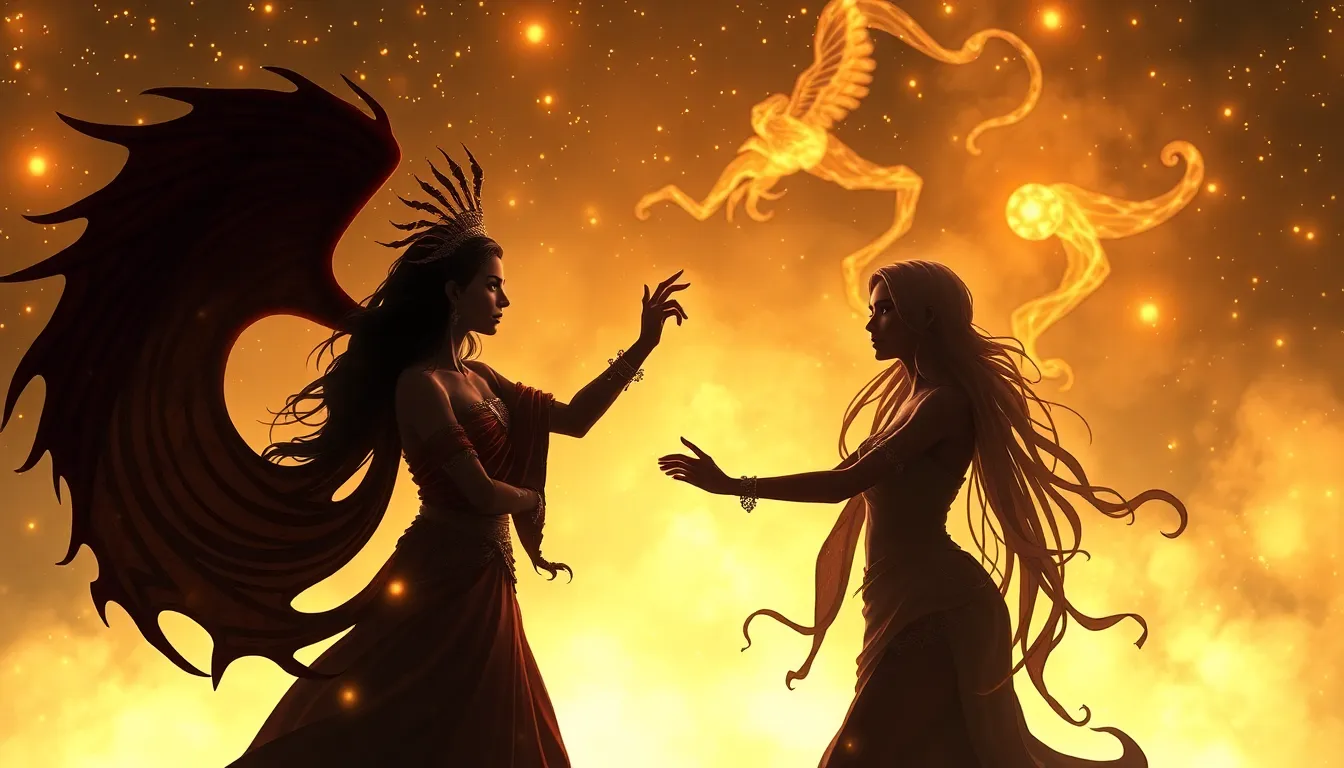The Dance of Fate: How Destiny Shapes Mythical Love Stories
Introduction: The Interplay of Fate and Love in Mythology
Mythical love stories have captivated human imagination for millennia, often intertwining the threads of fate and destiny with the intricate dance of romance. In these tales, fate is often depicted as an inevitable force that shapes the paths of lovers, dictating their joys and sorrows. Destiny, on the other hand, is perceived as the broader journey that encompasses the choices and experiences that lead to an ultimate conclusion. Across cultures, these narratives hold significant importance, reflecting societal values, moral lessons, and the universal quest for love.
The Concept of Fate in Mythical Narratives
Fate serves as a driving force in mythology, often depicted as a predetermined path that characters are bound to follow. This concept is prevalent in various cultures, each interpreting fate in unique ways:
- Greek Mythology: The Moirai, or Fates, control the life span and destiny of each individual, weaving the threads of life and determining their outcomes.
- Norse Mythology: The Norns, similar to the Fates, dictate the destinies of gods and men alike, emphasizing the inescapability of fate.
- Indian Mythology: Karma plays a crucial role, where past actions influence future destinies, intertwining love with moral consequences.
Iconic Mythical Love Stories and Their Fate-driven Plots
Throughout history, several love stories have stood out due to their profound exploration of fate. Two quintessential examples are:
- Orpheus and Eurydice: In this tragic tale, Orpheus, a gifted musician, descends into the underworld to retrieve his beloved Eurydice. Despite his tremendous effort, he is ultimately thwarted by fate, as he looks back at her before they escape, sealing her fate forever.
- Tristan and Isolde: Their love is thwarted by fate, as they are bound by loyalty to others and tragic misunderstandings, leading to a heartbreaking conclusion that suggests that not even love can conquer destiny.
In both stories, fate emerges as an omnipresent force that influences the outcomes, illustrating the fragility of love against predetermined paths.
The Role of Prophecy and Omens in Shaping Destiny
Prophecies and omens frequently guide characters in their decisions, highlighting the interplay between fate and choice. For instance:
- Oedipus: The prophecy foretells that he will kill his father and marry his mother, leading him to make choices that ultimately fulfill this dreadful fate.
- Romeo and Juliet: The “star-crossed” lovers are doomed from the outset, with their tragic fate foreshadowed by prophetic dreams and family feuds.
These examples illustrate how prophetic visions can dictate the course of love, forcing characters to confront their destinies head-on.
Contrasting Free Will and Predestined Paths
The tension between free will and fate is a recurring theme in mythical love stories. Many characters grapple with their sense of agency, often struggling against their destined paths. For instance:
- Achilles: In the Trojan War, Achilles is aware of his fate but chooses to fight, illustrating a conscious decision to embrace his destiny despite its tragic implications.
- Penelope: In contrast, Penelope’s loyalty to Odysseus showcases the power of choice in navigating a predestined narrative, as she remains steadfastly waiting for his return.
This duality raises questions about the nature of love and the extent to which individuals can shape their own destinies.
Cultural Variations in the Portrayal of Fate and Love
The portrayal of fate in love stories varies significantly across cultures, with distinct interpretations shaping the narratives:
- Eastern Interpretations: In many Eastern cultures, love stories often emphasize harmony with destiny, highlighting acceptance and the cyclical nature of life.
- Western Interpretations: Western narratives frequently focus on the struggle against fate, portraying characters who defy their destinies in the name of love.
These cultural beliefs influence how love and destiny are intertwined, reflecting the values and philosophies of each society.
Fate as a Catalyst for Tragedy and Transformation
Fate often leads to tragic outcomes in mythical romances, serving as a catalyst for both tragedy and transformation. As characters confront their destinies, they may undergo profound changes:
- Transformation: Characters like Orpheus transform through their journeys, evolving from despair into acceptance or deeper understanding of love.
- Tragedy: The tragic endings of stories like that of Romeo and Juliet emphasize the catastrophic consequences of fate, leaving a lasting impact on both the characters and the audience.
Such narratives illustrate the dual nature of fate, capable of bringing both growth and destruction.
The Influence of Fate on Modern Love Stories
Ancient concepts of fate continue to resonate in contemporary literature and film, demonstrating the timelessness of these themes:
- Modern Adaptations: Films like “The Fault in Our Stars” and “Titanic” echo the tragic love stories of the past, showcasing how fate intervenes in love.
- Literary Echoes: Many modern novels draw inspiration from mythical tales, exploring the complex relationship between love and destiny.
These adaptations highlight the enduring nature of fate in shaping romantic narratives, showing that the dance of fate and love is far from over.
The Psychological Impact of Fate on Love and Relationships
The belief in fate can significantly influence real-life romantic relationships. Psychologically, individuals who view their love lives through a lens of destiny may experience different dynamics:
- Increased Commitment: Believing in fate can enhance commitment, as partners may feel that their relationship is meant to be.
- Acceptance of Challenges: Those who believe in destiny may be more likely to accept challenges in their relationships, seeing them as part of a greater journey.
Insights from psychology reveal that the perception of destiny can shape relationship dynamics, leading to both positive and negative outcomes.
Conclusion: The Enduring Legacy of Fate in Love Stories
The interplay of fate and love in mythical narratives remains a powerful theme that transcends time and culture. These stories teach us that while love may be a profound force, it often dances intricately with the threads of destiny. As we reflect on the lessons learned from mythical love stories, we recognize that fate, while sometimes tragic, also offers profound insights into the nature of love, choice, and the human experience.



